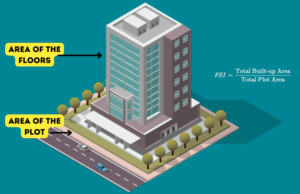Understanding FSI: Floor Space Index and Its Impact on Real Estate
Understanding FSI: Floor Space Index and Its Impact on Real Estate
Floor Space Index (FSI), also known as Floor Area Ratio (FAR), is a crucial term in real estate development. It determines the extent of construction permissible on a given land parcel. Understanding FSI is essential for developers, investors, and homebuyers alike, as it affects property prices, density, and urban planning.
In this article, we will explore:
- What is FSI?
- How is FSI calculated?
- FSI formula
- Factors impacting FSI
- What does FSI mean for buyers?
- The significance of FSI in real estate
- FSI regulations in various Indian cities
- Frequently Asked Questions (FAQs)
1. What is FSI?
FSI (Floor Space Index) is the ratio of the total built-up area of a building to the total area of the plot on which it is constructed. It is regulated by local municipal authorities and determines how much construction can take place on a specific plot of land.
For example, if a 1,000 sq. ft. plot has an FSI of 2, it means the total permissible built-up area is 2,000 sq. ft.
2. How is FSI Calculated?
FSI is calculated using a simple formula that takes into account the total built-up area and the plot size. It helps regulate urban development by ensuring sustainable growth and preventing overpopulation in a specific area.

3. FSI Formula
The formula to calculate FSI is:
FSI = Total Built-up Area/ Total Plot Area
For example, if a plot is 2,000 sq. ft. and the permissible FSI is 1.5, the maximum built-up area allowed is:
2,000×1.5=3,000 sq. ft.
4. What Impacts FSI?
Several factors influence FSI regulations, including:
- Location: Urban areas usually have a higher FSI than rural areas.
- Type of Building: Residential, commercial, and mixed-use buildings may have different FSI limits.
- Road Width: Wider roads typically allow higher FSI.
- Zoning Regulations: Different zones (residential, commercial, industrial) have distinct FSI limits.
- Special Incentives: Some areas may get increased FSI for urban renewal projects, metro corridors, or affordable housing.
5. What Does FSI Mean for Buyers?
For property buyers, FSI affects:
- Property Pricing: A higher FSI may lead to high-rise developments, making housing more affordable.
- Density of Development: Lower FSI areas may have more open spaces and better ventilation.
- Quality of Living: High FSI can lead to congestion, whereas controlled FSI ensures sustainable development.
6. Significance of FSI
FSI plays a vital role in urban planning and real estate development. It helps in:
- Managing Population Density: Controls overcrowding and improves infrastructure planning.
- Maximizing Land Use: Efficient use of land in prime locations.
- Infrastructure Planning: Ensures roads, sewage, and other amenities are adequately planned.
7. FSI Regulations in Various Indian Cities
FSI varies across Indian cities based on local development plans and municipal policies. Here’s an overview of FSI in some major cities:
| City | FSI Range |
|---|---|
| Mumbai | 1.33 – 5.0 |
| Delhi | 1.2 – 3.5 |
| Bangalore | 1.5 – 3.25 |
| Hyderabad | 1.5 – 4.0 |
| Chennai | 1.5 – 2.5 |
| Pune | 1.5 – 3.0 |
| Kolkata | 1.5 – 3.5 |
| Ahmedabad | 1.2 – 3.6 |
The FSI limit depends on zoning, road width, and special building regulations in each city.
Conclusion
FSI is a critical factor in real estate planning, impacting property prices, urban development, and infrastructure. Buyers should consider FSI regulations before investing in property, as it influences the density and overall living conditions in a region.
Are you planning to invest in real estate? Stay informed about FSI norms to make a well-informed decision!

